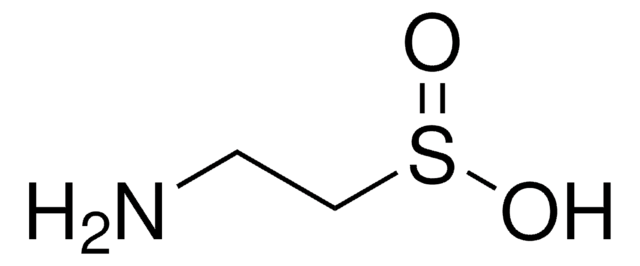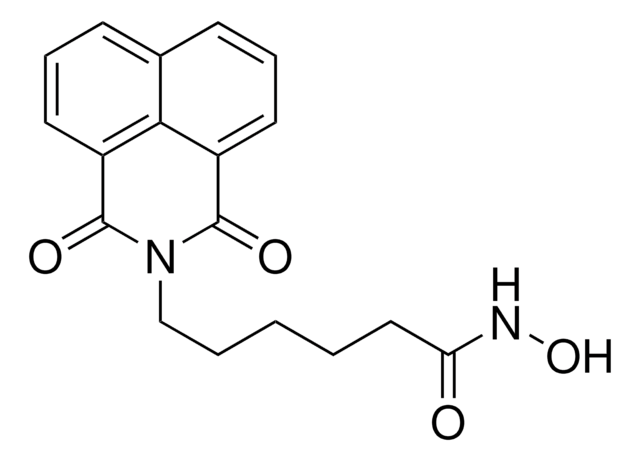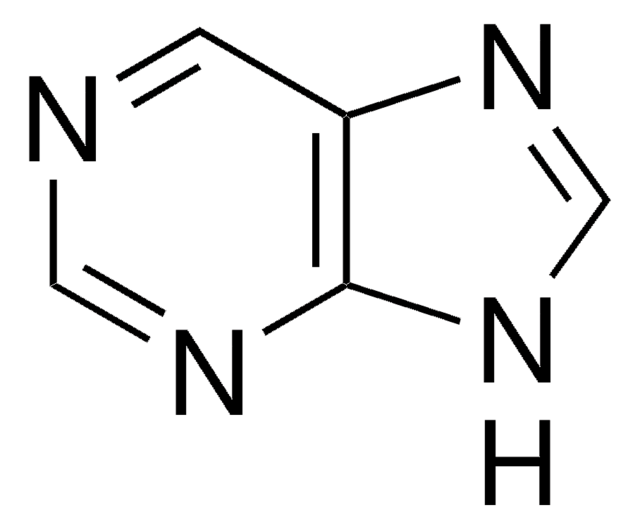D2629
6-(Dimethylamino)purine
≥98%
Synonyme(s) :
6-DMAP, N6,N6-Dimethyladenine
About This Item
Source biologique
synthetic (organic)
Pureté
≥98%
Forme
powder
Pf
259-262 °C (lit.)
Solubilité
water: 50 mg/mL, clear to hazy, colorless to light yellow
Température de stockage
−20°C
Chaîne SMILES
CN(C)c1ncnc2[nH]cnc12
InChI
1S/C7H9N5/c1-12(2)7-5-6(9-3-8-5)10-4-11-7/h3-4H,1-2H3,(H,8,9,10,11)
Clé InChI
BVIAOQMSVZHOJM-UHFFFAOYSA-N
Vous recherchez des produits similaires ? Visite Guide de comparaison des produits
Catégories apparentées
Description générale
Application
- as a supplement in GR-1 aa medium (bovine medium) for parthenogenetic activation of bovine oocytes to study its potential for embryo development
- in the activation step during the production of nuclear transfer embryos
- as a supplement in HCR2aa medium to activate interspecies embryos derived from interspecies somatic cell nuclear transfer (iSCNT) technique
Actions biochimiques/physiologiques
Code de la classe de stockage
11 - Combustible Solids
Classe de danger pour l'eau (WGK)
WGK 3
Point d'éclair (°F)
Not applicable
Point d'éclair (°C)
Not applicable
Équipement de protection individuelle
Eyeshields, Gloves, type N95 (US)
Certificats d'analyse (COA)
Recherchez un Certificats d'analyse (COA) en saisissant le numéro de lot du produit. Les numéros de lot figurent sur l'étiquette du produit après les mots "Lot" ou "Batch".
Déjà en possession de ce produit ?
Retrouvez la documentation relative aux produits que vous avez récemment achetés dans la Bibliothèque de documents.
Les clients ont également consulté
Notre équipe de scientifiques dispose d'une expérience dans tous les secteurs de la recherche, notamment en sciences de la vie, science des matériaux, synthèse chimique, chromatographie, analyse et dans de nombreux autres domaines..
Contacter notre Service technique



